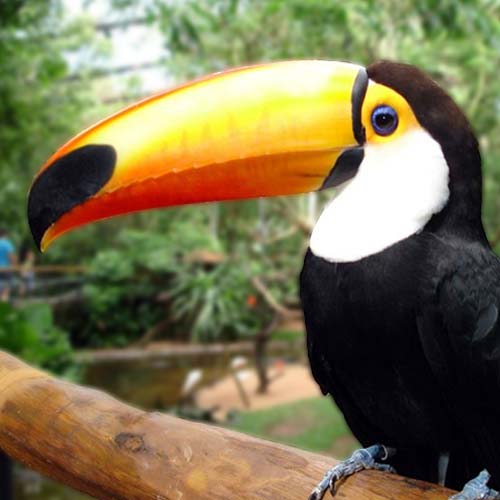 Toucan (Sam)
Toucan (Sam)
The common name given to numerous species of tropical American forest birds known for their large and strikingly coloured bills. The term toucan is used in the common name of about 15 species (Ramphastos and Andigena), but the aracaris and toucanets are smaller, very similar birds of the same family that are also considered toucans Toucans are one of the noisiest jungle birds, with a varied repertoire of harsh croaks, yelps, mews, rattles, and other sounds. Some of the larger species sing a series of almost musical calls at dawn.
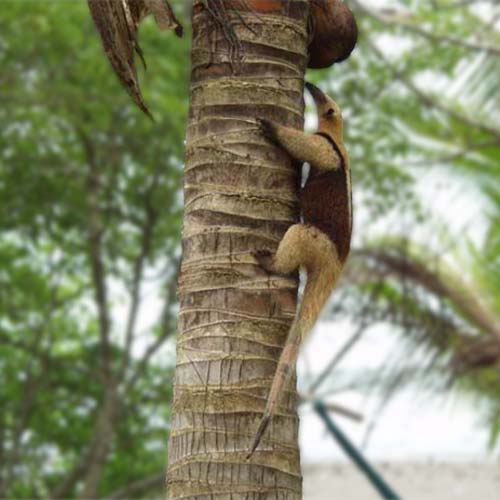
Giant Anteater
With its huge, bushy tail and astonishingly long proboscis, is now restricted to the less sparsely forested areas of the Osa Peninsula. It can grow to two meters long and when threatened rears itself on its hind legs and slashes wildly with its claws. It also raises its tail over its head. Even machetes cannot cut through the tough bristles; thus the fearsome critter is revered among campesinos for its magical abilities.
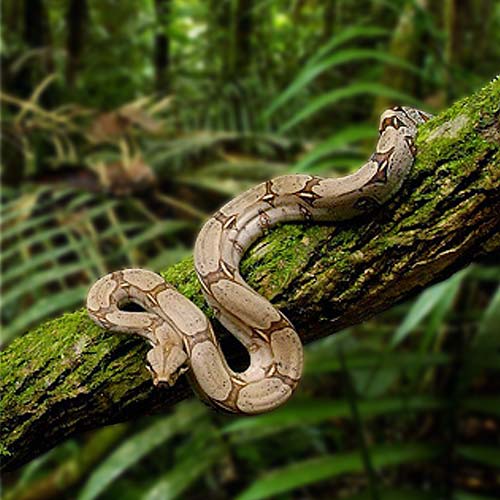 Boa Constrictor
Boa Constrictor
Although rarely seen by the casual tourist in Costa Rica, snakes make up almost half of all reptile species in the nation (135 species, 17 poisonous). It is a fortunate traveler indeed who gets to see in the wild the fantastically elongated, I-beam-shaped chunk-headed snake, with its catlike elliptical eyes; the slender, beak-nosed bright green vinelike vine snake; or the relatively benign Boa Constrictor. Many neotropical snake species inhabit a wide range of Costa Rican environments, and wherever you are in the country there are sure to be snakes about. Not that you should worry. Fewer than 500 snakebites are reported each year, and less than three percent of these are fatal. Most bites occur among farmworkers.
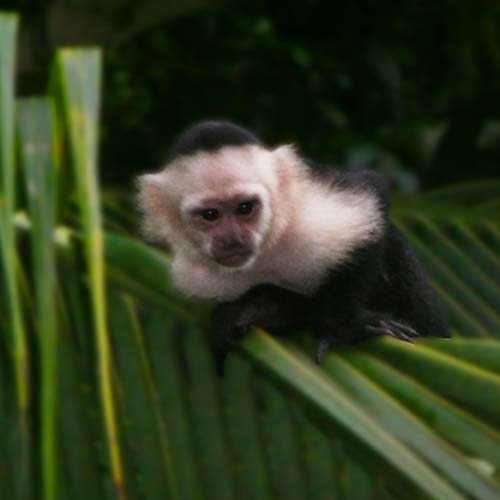
Capuchin
The White-headed Capuchin (Cebus capucinus), also known as the White-faced Capuchin or White-throated Capuchin, is a small New World monkey of the family Cebidae, subfamily Cebinae. Native to the forests of South and Central America, White-throated Capuchins are important to rainforest ecology by their role in dispersing seeds and pollen. Among the best known monkeys, White-headed Capuchins are recognized as the typical companion to the organ grinder and for the role of “Marcel” in the popular television series Friends. They are highly intelligent monkeys and have been trained as assistants for paraplegic persons.
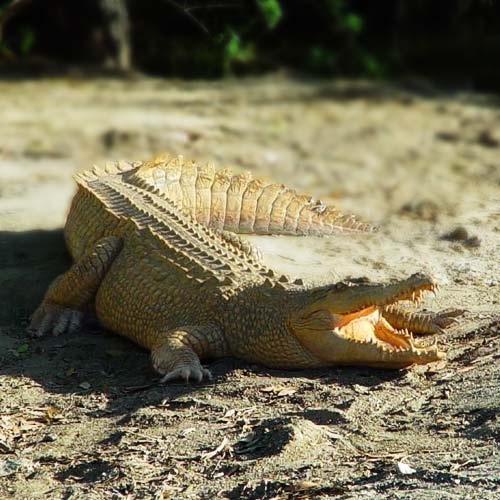
Crocodiles
Many travelers visit Costa Rica in the hope of seeing crocodiles and caimans, modest-sized relatives. One of the smallest of Western Crocodilians–no more than two meters long–and possibly the most abundant in existence today, the speckled caiman is still relatively common in parts of wet lowland Costa Rica on both the Atlantic and Pacific coasts. Palo Verde and Tortuguero are both good places to spot them in small creeks, playas, and brackish mangrove swamps, or basking on the banks of streams and ponds.
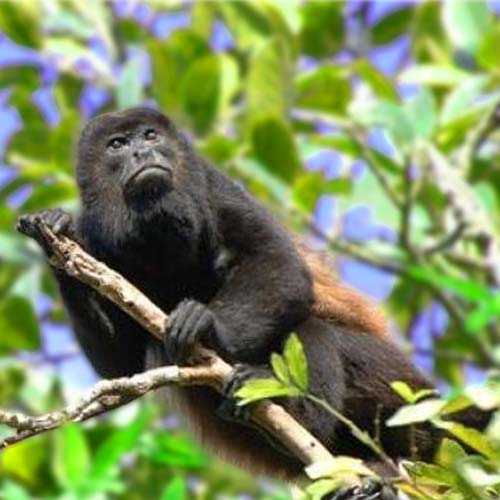
Howler Monkey
Is the most abundant as well as the largest of Central American monkeys (it can weigh up to five kg). It inhabits both lowland and montane forests throughout Costa Rica. Fortunately, it is less sensitive to habitat destruction than the other monkeys and can be found clinging precariously to existence in many relic patches of forest. While howlers are not particularly aggressive, they sure sound it.
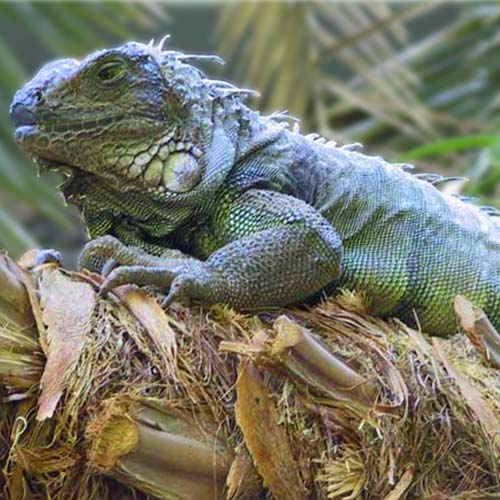
Iguana
The species was first officially described by Swedish botanist Carl Linnaeus in 1758.[2] In the two centuries since then, no less than 17 species and subspecies have been identified with all but one species (Iguana delicatissima) being found to be invalid.[2]
A herbivore, it has adapted significantly with regard to locomotion and osmoregulation as a result of its diet. It grows to 1.5 metres (4.9 ft) in length from head to tail, although a few specimens have grown more than 2 metres (6.6 ft) with bodyweights upward of 20 pounds (9.1 kg).
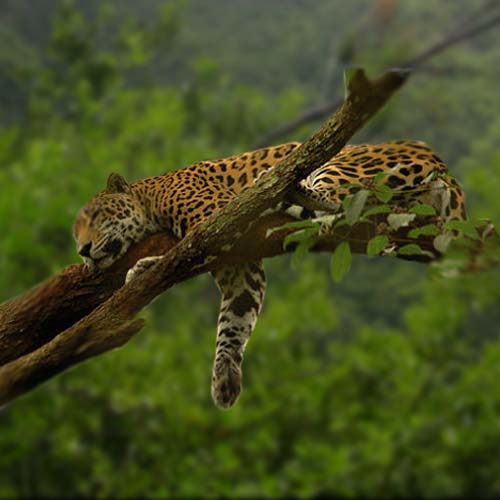
Jaguar
Is a big cat, a feline in the Panthera genus, and is the only Panthera species found in the Americas. The jaguar is the third-largest feline after the tiger and the lion, and the largest in the Western Hemisphere. The jaguar’s present range extends from Southern US and Mexico across much of Central America and south to Paraguay and northern Argentina. Apart from a known and possibly breeding population in Arizona (southeast of Tucson), the cat has largely been extirpated from the United States since the early 20th century.
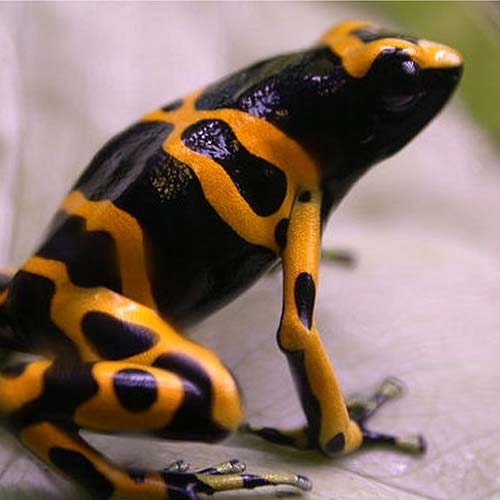
Poison-Arrow Frog
In Central and South America at least 20 kinds of frogs have developed this defense still further: their alkaloid poisons are so toxic that they can paralyze a large bird or small monkey immediately. Several species–the dendrobatids, or Poison-Arrow Frogs, which are confined to Costa Rica–produce among the most potent toxins known: atelopidtoxin, bufogenin, bufotenidine, and bufotoxin. Pity the poor snake that gobbles up Dendrobatis granuliferus, a tiny, bright green, red, and black frog which inhabits the lowland forests of the Golfo Dulce region (it is commonly seen on forest floors of Corcovado National Park).
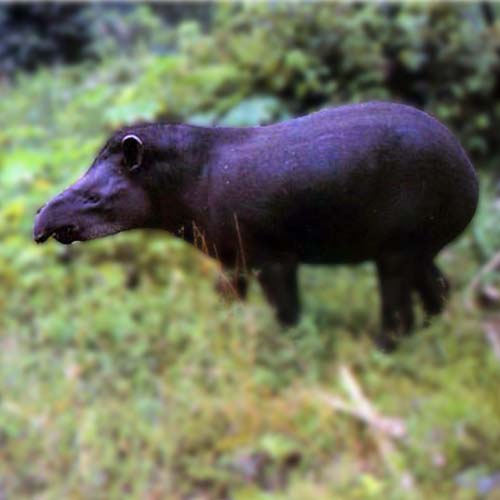
Tapirs
Another symbol of the New World tropics is the strange-looking Baird’s tapir (danta locally), a solitary, ground-living, plant-eating, forest-dwelling, ungainly mixture of elephant, rhinoceros, pig, and horse. The tapir uses its short, highly mobile proboscis–an evolutionary forerunner to the trunk of the elephant–for plucking leaves and shoveling them into its mouth. This endangered species is the largest indigenous terrestrial land mammal in Central America. Like its natural predator the jaguar, the tapir has suffered severely at the hands of man. The animal was once common in Costa Rica and ranged far and wide in the lowland swamps and forests. It was even present in the bamboo thickets up to 3,000 meters elevation in the Talamanca mountains. Hunters have brought it to the edge of extinction.
